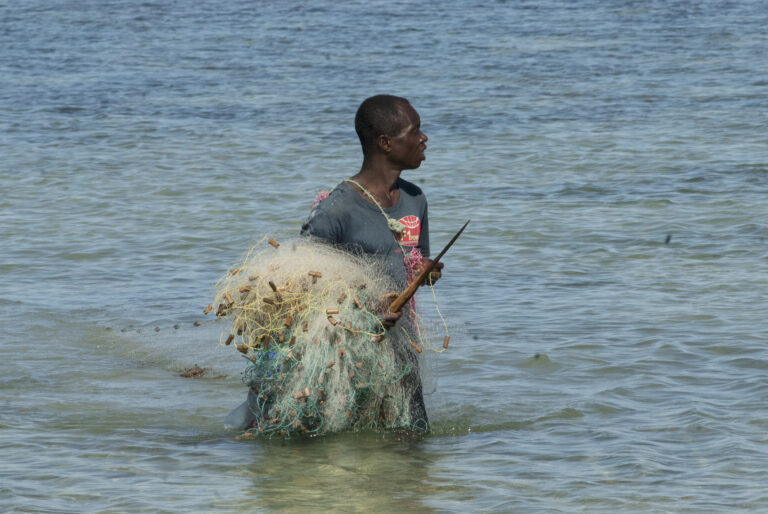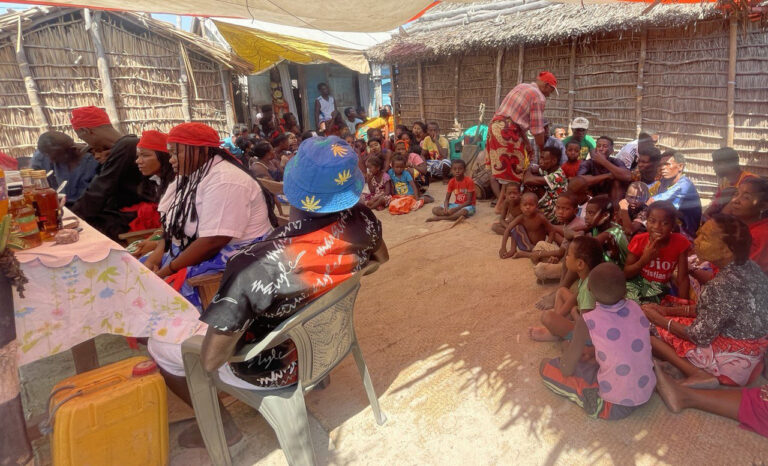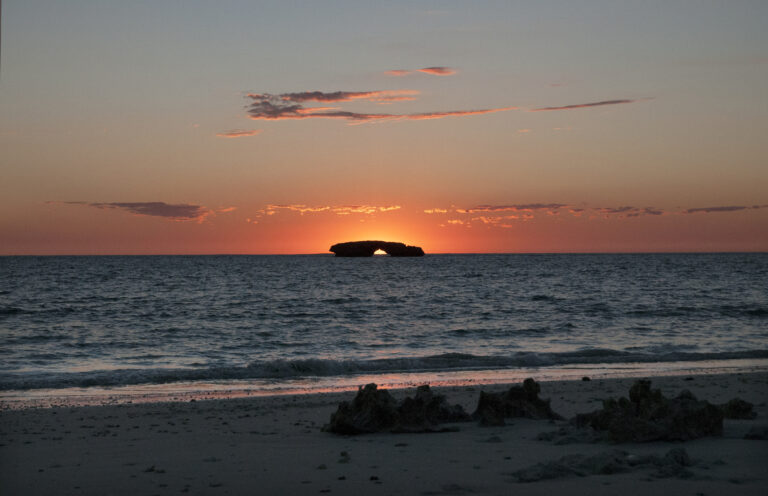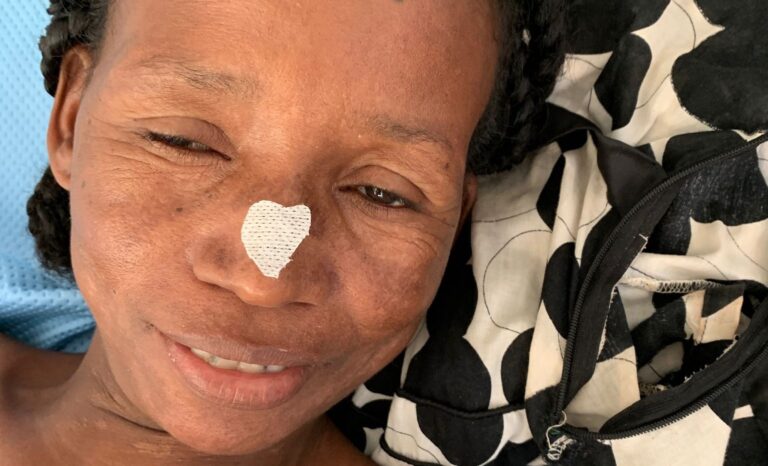Toliara
Madagascar
PERSONAGES
Mrs. Pelavelo
A woman arrived at the hospital semi-conscious with a very high fever and a dead fetus in her womb for about a year. The ultrasound showed a chilling picture. A completely macerated fetus. The abdomen full of fluid. If they had told me I would not have believed it. We didn't understand how she could still be alive, how she had made it through the journey, how much pain she had suffered. We knew she couldn't make it. We decided that if she survived until the next morning, we would give it a try.
At 7 o'clock the patient, Mrs. Pelavelo, had regained consciousness. We decided to have surgery on her. What we found in her abdomen is not describable. Never seen anything like it. But she was still alive, we could hear her breathing.
Her family members stayed with her day and night, for days, while the incredible happened... Mrs. Pelavelo did not die. Today Mrs. Pelavelo is an institution in our hospital. She helps other patients and new mothers with their children. And I can't help but caress her every time I see her. She is the symbol of what we have achieved on Vezo and Mikea: they are truly immortal!
Tsy misy ambany, tsy misy ambony
"No one is below, no one is above". This phrase is used during marriages, to express fairness in the exchange between families – one gets a new "son" for a "daughter", and vice versa.
In fact, if the bride's family is initially "superior" because the groom's family has to beg her for marriage and for the recognition of the couple's children, this is rebalanced by the fact that the bride must leave the home of her family of origin, a loss for the latter, since marriage is often virilocal – the new couple lives at the groom's house.
WHAT TO EAT
The fish
In a fishing village marked by great economic poverty and famine due to climate change - it hasn't rained here for over 4 years - the seafood is, together with rice, one of the prevailing foods for this people.
It is eaten fried or boiled. Another way to cook it is on the grill by making long skewers, arranged around the fire.
The conservation of the fish is done by cleaning it from the inside and leaving it to dry in the sun.
The rice
Vezo people prefer simple dishes, with limited use of spices.
Rice is the central element of Malagasy cuisine. They eat it three times a day, the portion is one capuaka per person (equivalent to one of our cans of peeled tomatoes).
At breakfast it is cooked in abundant water and eaten semi-liquid (sosoa), while at lunch and dinner it is cooked by allowing the cooking water to be completely absorbed.
Varimaika (evening rice dish) is accompanied by fried or boiled fish or often eaten unaccompanied.
The zebù meat
Zebu meat is eaten on important occasions or in sacred rites and is cooked in tomato sauce, boiled or fried.
During the rite of the Fomba a zebu is killed, the blood is shed on the ground as a sign of purification so as not to incur the punishment of the ancestors.
Rum also cannot be missing during this ritual and a few drops must be poured on the ground for the same reason.
The food is then shared by all participants.
MUST-SEE
Andavadoaka
In the streets of Andavadoaka there is a lot to see: huts and fences made of wood and bamboo canes, colorful stalls of fruit, vegetables and fabrics sold by women, among the passage of children, goats, chickens and ducks roaming free, and carts pulled by zebu. Along the coast, numerous Vezo pirogues, unique for decoration and shape, sail in a row. In the village you can eat fresh fish from the fisherman Josela and delicious zebu milk yogurt. You can also visit the old dressmaker Samueline, or other tailors, in order to commission a dress made with local fabrics. This is the favorite souvenir for foreigners, a handcrafted product with the typical local colors.
The sacred forest of Miary
The sacred forest of Miary is a few kilometers northeast of Toliara. It looks like a forest, but it is not. We call it that because of the number of trunks and branches from which the aerial roots hang, which, once they get to the ground, become new trunks and new branches that over the years perpetuate this miracle. This is the nature of ficus banyan and, if man does not intervene, the size of the tree increases and a tree can turn into a forest. It is the gift that nature has given to the Malagasy: a forest of one tree, born 700 years ago, of incredible dimensions. The Malagasy people appreciated the gift and made it the most sacred place of their culture: the house of the spirits of their ancestors.
The ancestors' house
Near the beach, in the turquoise lagoon I see a beautiful rock, it has a tunnel that crosses it. I would like to swim there.
A Malagasy friend tells me: it is sacred. I am curious but I remain silent. He looks at me and, forcing himself, tells me: there are the spirits of our ancestors.
I do not go.
Days later a volunteer wants to go there: don't do it, I tell him, there are the spirits of the ancestors, it must be respected.
He goes, explores the rock and the bottom of the sea.
On the shore are Malagasy friends. They notice him, they observe him. Yet they don’t tell him anything.
This is the Vezo people.
PICTURES

Vezo Fisherman
Toliara, Madagascar

The “tromba”, a Malagasy possession ceremony.
Toliara, Madagascar

Waiting in front of the hospital
Toliara, Madagascar

Masikoro farmer
Toliara, Madagascar

Bilo orchestra
Toliara, Madagascar

Family sorrounding a patient
Toliara, Madagascar

The thorny forest, land of the Mikea.
Toliara, Madagascar
Jialiang Gao

The Rock with the Hole, the house of the ancestors.
Toliara, Madagascar

Mrs. Pelavelo
Toliara, Madagascar
Tagged madagascar
